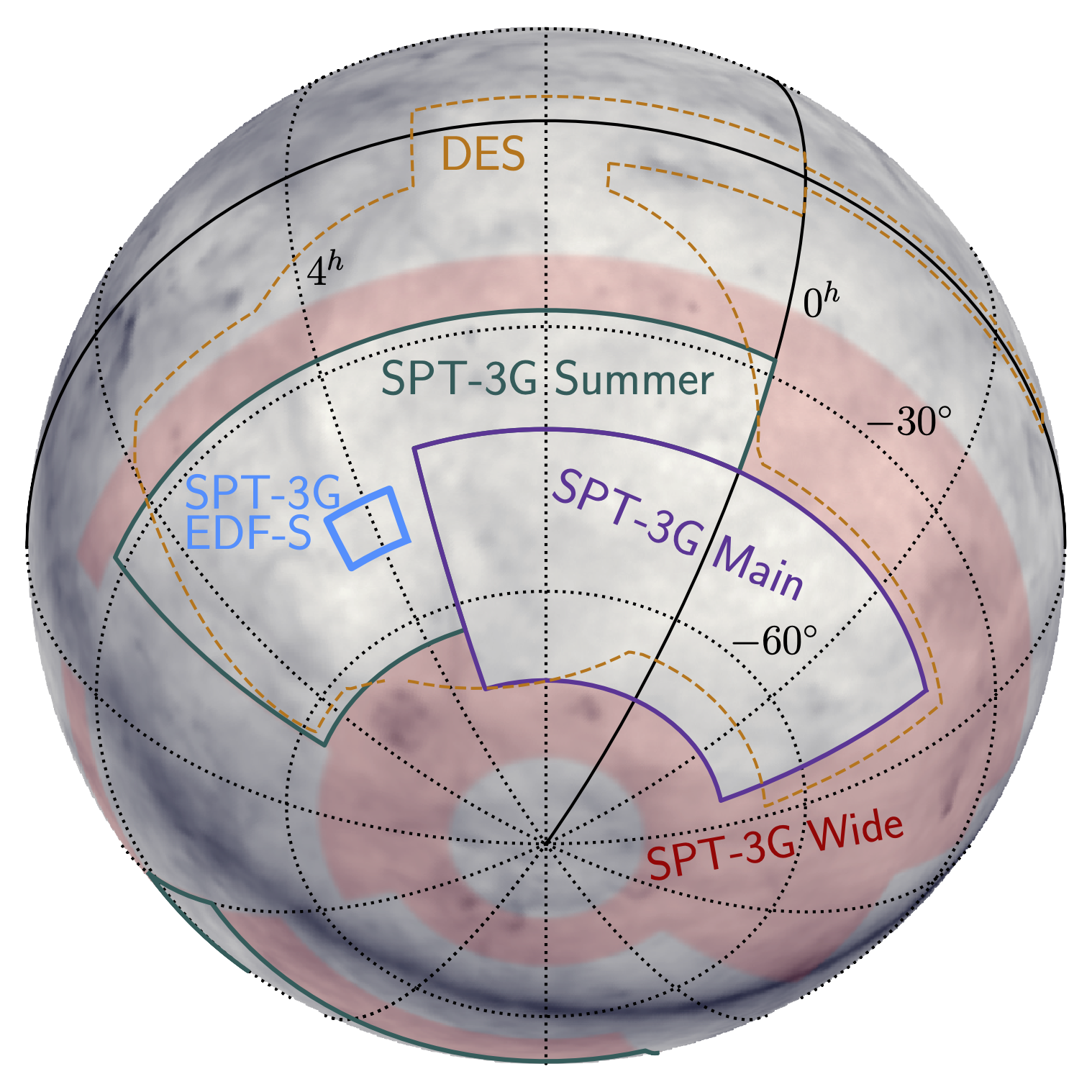Work Update: EDF-S
CosmoStat Group Meeting
September 23, 2025
Outline
Background on Euclid Q1 and EDF-S
EDF-S CMB lensing motivation
Current status of lensing analysis
Next steps & timeline
Why this presentation may not be the best
Euclid Q1 & EDF-S
Euclid’s “Quick Data Release 1” (Q1) is the first public data from Euclid, and includes 3 fields (EDF-S, EDF-F, EDF-N) totaling 63 deg².
- More observations will be conducted to turn the Q1 fields in Deep Fields (50x deeper than the Wide Survey) for legacy science.
SPT observed EDF-S last fall, and did a data release of catalogs, temperature maps, and associated data products at the beginning of June.

CMB Lensing with EDF-S
- EDF-S will become a legacy deep field, and CMB lensing lensing maps will be a useful data product for the community.
While Q1 data was nominally not intended for cosmology, the galaxy clustering signal is very strong. Giulio Fabbian has been leading a 2x2pt galaxy clustering \(\ev{\delta_g\delta_g}\) & CMB lensing \(\ev{\delta_g \kappa_{\rm CMB}}\) analysis with ACT and Planck lensing maps.
The ACT cross-correlation SNR is about 6—we can do much better with SPT!

Mapmaking


Aman Chokshi
SPT takes data by performing constant-declination
scans across the sky:
- 72 scans in a given 2-hour observation,
- 12.5 arcmin elevation step between scans,
- 0.3-0.6 arcmin\(^{-1}\) sampling rate,
- ~14 000 useable detectors
Fundamental data product: timestreams.
- To get to a map: filter timestreams, bin into pixels.
Mapmaking


Source Templates
Using a higher mapmaking threshold of 20 mJy in combination with a source template to reduce number of holes in the map and filtering artifacts.
- Source template: mock-observed map of beam-convoled sources made from the EDF-S source catalog.
Sources > 20 mJy and clusters will still be inpainted.
Only sources > 6 mJy are included in the template, to match the foreground power in the 2-year Gaussian lensing sims.
This approach has required several iterations, but seems to be working well.
Source Templates

Source Templates



Component Separation
Leverage frequency-dependence of noise and foregrounds to make
a cleaner estimate of the CMB: \[X_{\vbell}^{\rm MV} = \sum_{i} \mathbb W_{\vbell}^{i} X_{\vbell}^{i}.\]





Component Separation
I shared these data products with Victor over the summer and he kindly sent me back ML-seperated maps.
but I haven’t had a chance to look at them yet 😔





Lensing Reconstruction
Adapting pipeline from the 2-year winter flat-sky QE analysis.
So far only running on data; so no mean-field, Monte-Carlo response, etc.





Cross-correlations with Euclid
- Galaxy density maps and ACT bandpowers kindly provided by Giulio.
- Error bars calculated with
NaMaster.




Summary & Next Steps
- Data processing aspects largely wrapped up.
- Lensing maps maps look sensible but amplitude seems to be 40-50% low,
likely due to missing Monte Carlo correction. - Cross-correlation SNR ~20% higher than ACT
(6.8 vs 8.2 for single tomographic bin).
- Next steps:
- Run on sims to get response, mean-field, and noise bias corrections.
\(\implies\) some level of lensing power spectrum validation. - Map calibration (Pcal, T\(\to\)P, EB nulling…)
- Try Julien Carron’s lensing reconstruction code
- Run on sims to get response, mean-field, and noise bias corrections.
Timeline & Euclid DR1
- Planning to have a draft this fall: currently halway through map calibration.
- One paper on lensing maps and x-corr? Or two separate ones?
- If the latter, could add a public shear catalog and do a mini 3x2pt
(\(\delta_g\kappa_{\rm CMB}\), \(\delta_g\gamma\), \(\gamma \kappa_{\rm CMB}\))
- If the latter, could add a public shear catalog and do a mini 3x2pt
- Euclid CMBX RR2 Hands-On Meeting Oct 7-8 in Paris
- DR1 EC/MoU proposal for a Euclid-SPT 3 \(\times\) 2pt accepted by respective committees (waiting for final ECEB approval).

Credit: Margherita Lembo
Thanks!
Cail Daley | Work Update | CosmoStat Group Meeting | September 23, 2025